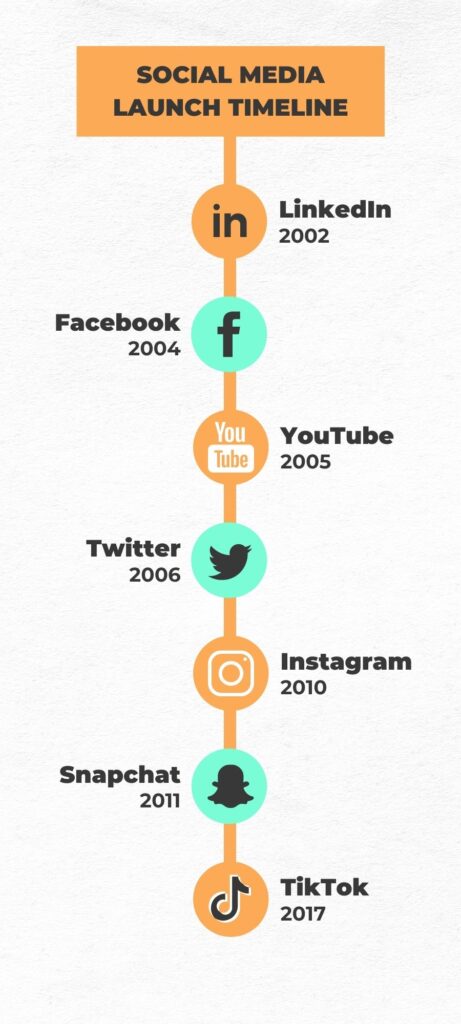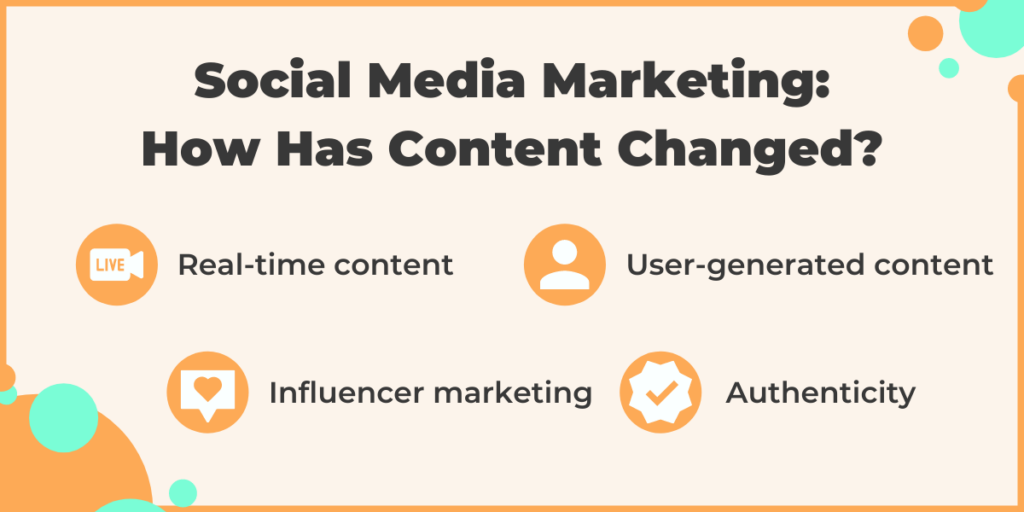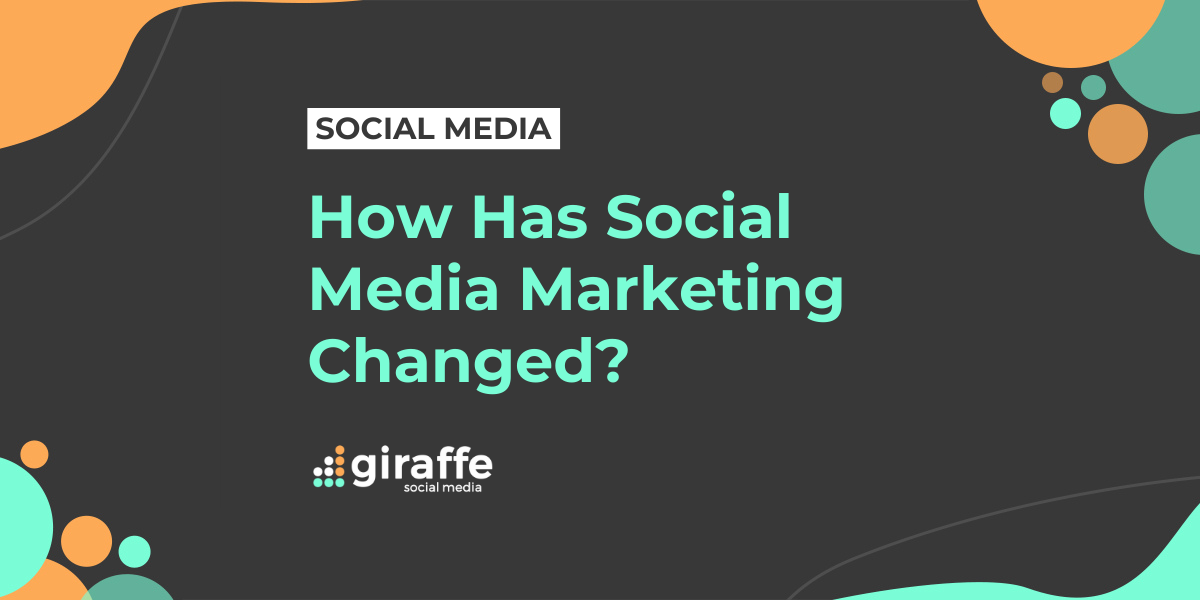Social media marketing is a rapidly evolving territory. 20 years ago, social media was in its infancy and certainly unlike how we know it today. Now, social media is an essential aspect of online marketing tactics for businesses of all sizes and industries.
We’re looking back on the history of social media marketing, starting with the earliest versions of social media platforms.
The Early Years and Precursors to Social Media
1978
According to acodez.in, “the first documented social media platform was the computerised Bulletin Board System” created in 1978. The program allowed computer hobbyists to discuss information and news.
1994
With a 16-year gap in social media invention, the next big milestone in social media history was “the launch of The Palace in 1994.” The Palace, or Palace Chat, is still available today (although not through secure servers) and allows users to chat on different servers with their own avatar shown in front of a graphical background.
1997
Often regarded as “the first true social media network,” SixDegrees was launched in 1997 and allowed users to meet people, make friends, and upload photos. It is based on the concept of “six degrees of separation” between everybody in the world. The site allows you to see your degrees of separation from every other user on the site.
As with The Palace, SixDegrees is still online today but does not comply with modern security certificate requirements, so will not be linked here.
The Social Media Boom

2003
Social media blossomed with the creation of LinkedIn and the now-defunct Friendster in 2002, with both officially launching in 2003.
LinkedIn is now “the world’s largest professional network with nearly 740 million members in more than 200 countries and territories worldwide.”
Flickr and Photobucket were also launched in 2003, planting the seed for photo-focused social media to develop. This paved the way for, eventually, apps like Instagram to take the internet by storm.
2004
Facebook’s launch in 2004 was a huge turning point in the world of social media. Reaching 1 million users within just 10 months, Facebook paved the way for modern social media platforms.
2005
Another historical moment for social media was the launch of YouTube in 2005, introducing video into the social media sphere.
The first-ever YouTube video “Me at the zoo”, filmed by one of YouTube’s co-founders, was uploaded on 24 April 2005 and has amassed 159m views [as of March 2021].
2006
In what is considered one of the best consumer tech acquisitions of all time, Google bought YouTube in 2006 for $1.65 billion (a huge price tag for the time!)
Another big milestone for social media happened in 2006: the launch of Twitter. Twitter was inspired by SMS-style messaging, starting the fast-paced, conversational Tweets we know and love today.
2007
Twitter introduced hashtags way back in 2007 when the site was still relatively new.
The Terrific Tens & the Rise of Social Media for Marketing and Advertising
In terms of social media and digital marketing, the 2010s “are most notable for turning social media marketing from an advanced level tactic to a fundamental must-have.”
2010
2010 saw the launch of one of the current biggest platforms in social media marketing: Instagram. Gaining its first million users within the launch year, Instagram was designed as a mobile-first experience, shifting away from desktop-focused platforms.
2011
Snapchat was launched in 2011, with an appeal to younger audiences and its innovation of the way we share content. Snapchat popularised the format of temporary, disappearing images and videos sent to contacts.
2012
Facebook (controversially) bought Instagram in 2012 for $1 billion in a “watershed moment for Big Tech.” At the time, “even though the app had a mere 25 million registered users, compared to Facebook’s hundreds of millions, businesses were already using Instagram to post photos of their products, and their followers were actually interacting and commenting.”
Instagram now features approximately one billion monthly active users, making it one of the current most popular social media networks worldwide.
2014 – 2016
Between 2014 and 2016, Facebook advertising spend jumped from $10 billion to over $25 billion.
By 2015, Instagram ad revenue surpassed $500 million, while Snapchat’s reached $50 million. Not too shabby for the young networks!
2017
TikTok was originally launched in 2017 before taking the world by storm in 2019 and beyond. Although it features some advertising from brands, TikTok is more heavily focused on individual users. Influencer marketing and paid product promotions are more common than direct, paid ads from businesses.
How has social media marketing changed?
Now that we’ve established the key dates and milestones for social media marketing development, let’s dive into the trends and changes in social media marketing throughout the years.

Authenticity
Over time we saw content from brands shift from high-quality, big-budget production value to a larger focus on authenticity and personification of the brand. The consumers of today expect brands to be “real” with their audiences with a consistent brand persona. On social media, authenticity breeds advocacy through unique and purposeful actions designed to engage your audience and create brand advocates/loyalists.
User-generated content and influencer marketing
In recent years, letting your customers and brand advocates do the talking has become one of the most popular approaches to social media marketing, especially when it comes to the rise of influencer marketing. People trust other people; no matter how authentic and relatable your brand persona is, consumers are more likely to trust and/or purchase from other, like-minded consumers and influential figures in their industry.
User-generated content puts your customers front and centre with their thoughts, feelings, and opinions in the spotlight through repurposed content. With permission, brands can use customer content to promote their products from a different perspective.
Learn more about influencer marketing here, and user-generated content here.
Live and real-time content
Twitter was one of the first social media platforms, if not the first, to focus its attention on live and to-the-minute updates from brands and individual users. Quick, short Tweets in under 140 characters (now 280) allowed brands to communicate effectively and keep up with current events.
With the introduction of live-streaming across Facebook, Instagram, YouTube, and more, we began to be able to keep our followers informed and/or entertained in real-time. This trend is here to stay, feeding into brand authenticity and personification as well as consumers’ needs for information as quickly as possible.
The future of social media marketing
While some aspects of social media are predictable, you never know when a new platform or trend is going to take-over the internet seemingly out of the blue. When it comes to social media marketing, it’s important to stay up to date on changes and developments in social media, as trends and tactics can become outdated very quickly.
To stay in the loop on all things social media marketing, follow us on Instagram, Twitter, LinkedIn, and Facebook, and make sure to check out our blog for regular industry news and content.





